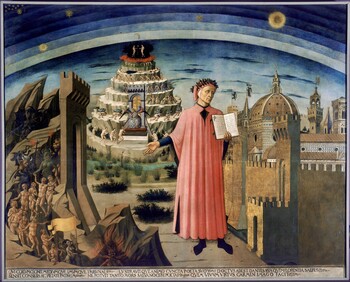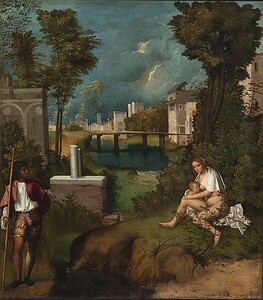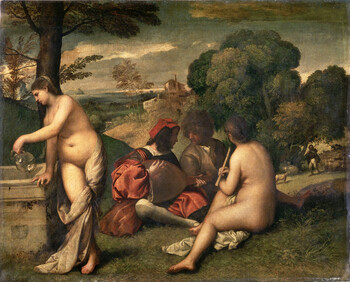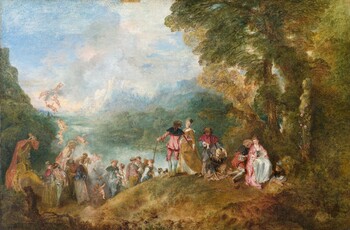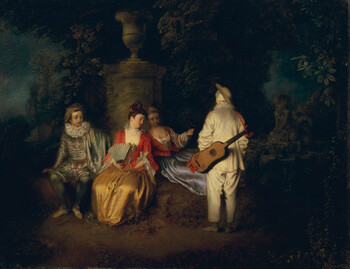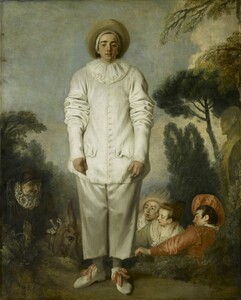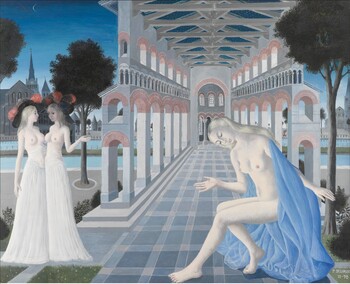5.500 €
Unidentified French painter, early 17th century
The crowning of a poet (?)
(probably a subject taken from “L’Astrée” by Honoré d’Urfé)
Oil on panel : 75,8 X 76,2 cm
Unsigned
Frame : 90,5 X 90,2 cm
In short
The theme of our painting is a courtly celebration of love. Our mysterious composition breaths an enchanting musical and theatrical mood and dreamy melancholy that one finds back in the early 16th century masterpieces of Giorgione and in the early 18th century “fêtes galantes” of Antoine Watteau.
Its subject must be derived from one of the numerous storylines in the 5.399 pages of the contemporary French pastoral romance of Astrée and Céladon.
About L’Astrée
L’Astrée is an extremely important, but complex French pastoral novel, published between 1607 and 1628. Over more than 5.000 pages the authors tell of the pure love affair between two young shepherds, Astrée and Céladon. The setting is an enchanted forest during the 5th century AD, after the fall of the Roman empire.
The story was written down in 5 separate parts:
- the first four were written by Honoré d’Urfé (1568 – 1625); in fact the fourth part was completed by Balthazar Baro at d’Urfé’s death;
- the fifth was written by Pierre Boitel.
The storyline is extremely complicated, holding 40 side-stories of numerous other characters, all standing in the way of the painful desire for a righteous, honourable love affair.
About our painting
Our enigmatic, deliberately artificial, serene composition, set in an Arcadian landscape, tells in three separate tableaux the romantic story of a refined young shepherd:
- at left he is sad, another young man is comforting him;
- in the centre he stands amidst two women;
- at right he is being crowned by a yet another woman.
It seems as if a graceful noble company is performing a pastoral play. The painting breaths a strongly idealised, seemingly strange, but lyric atmosphere. On the one hand it reminds of the elusive, poetic Venetian, High Renaissance paintings of Giorgione (and of Titian), a century earlier. On the other hand our Early Baroque painting seems to be a precursor of Antoine Watteau’s Rococo Embarkation for Cythera.
Why should you buy this painting?
Because this poetically realistic painting will never seize to surprise you.
Comparative paintings
Click photos for more details

